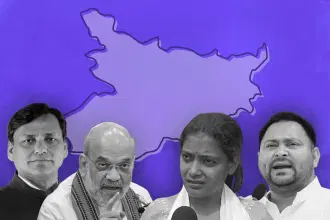Commentary
Vanvasi Wars Of Independence: How India Forgot The Tribal Resistance
Nabaarun Barooah
Aug 14, 2025, 01:59 PM | Updated 08:11 PM IST
Save & read from anywhere!
Bookmark stories for easy access on any device or the Swarajya app.


When India tells her story of independence, it usually runs along a straight line.
In the popular imagination, India's freedom story follows a straight line paved with the salt of Dandi and echoing with Gandhi's non-violence. Textbooks carry sepia photographs of Gandhi and Nehru, the narrative moves from petitions to protests, from satyagraha to swaraj, culminating in that midnight hour in 1947.
More recently, a second narrative has emerged: that of the revolutionary freedom fighter. Here, Bhagat Singh stands with his noose-bound defiance, Khudiram Bose walks to the gallows, Savarkar writes his thoughts in jail, and the Chittagong armoury raid bursts into gunfire.
But there was a third road, older and less travelled. One that began in sal forests and bamboo-thatched villages, where resistance looked not to Westminster for its vocabulary of freedom, but to sacred stones, flowing rivers, and ancestral spirits.
The Nature of Tribal Resistance
The tribal struggle was as old as the colonial presence itself and in some places, older still, for these communities had been resisting intrusive states long before the British arrived. Their fight was not fought with speeches in legislative assemblies or essays in nationalist journals. It was a fight in which a man's knowledge of the bend of a river or the echo in a gorge could mean the difference between life and death. It was a fight waged not only with bows, spears, and later, stolen rifles, but with song, ritual and prophecy.
And it was a fight that unlike the Congress-led movements or the armed revolutionary cells, was not just about political sovereignty. For the tribal world, sovereignty meant something deeper: it meant the right to live as their forebears had lived, to hunt in the forest without a permit, to till the ancestral field without paying rent to an alien zamindar, to worship their gods without an inspector or a missionary looking over their shoulder.
From the British point of view, many of these uprisings were little more than "tribal disturbances" or "primitive revolts" which were brief, violent episodes to be put down with a few police expeditions. They were often dismissed as parochial, even irrational.
Yet when we step closer, we find that they were neither parochial nor primitive. They were deeply rational within the cultural and political logic of the communities that waged them. They were, in their own terms, wars of independence, not to secure a seat in a distant Parliament, but to preserve the integrity of a world that was under assault.
The leaders of these movements were not trained in law schools or radicalised in European cafés. They were herders, hunters, shamans, village headmen and people who commanded not armies in uniform, but kinship networks, clan loyalties and sacred obligations. A Gond rebel leader might carry the memory of a river spirit's blessing into battle; a Naga prophetess might rally her people not with a call to "independence" but with a promise of the ancestors' return.
Their politics, if we can even use that word in its modern sense, was inseparable from their cosmology. To lose the land was to lose the sacred. To cut the forest was to sever the bond between the living and the dead.
This is why their resistance looked so different from the nationalist agitation in the cities. In the Congress movement, "Swaraj" meant self-rule for the Indian nation-state. In the revolutionary underground, it meant a modern republic free from British chains. In the tribal world, it meant something older, smaller in scale, but no less profound: the self-rule of the clan, the village, the hills and the forests as it had always been.
It is important to understand this difference, because it is why the tribal freedom struggle has so often been ignored or misunderstood. The nationalist historian, looking for a march towards modern statehood, finds only "local rebellions." The Marxist historian, searching for class struggle in the industrial sense, sees merely "peasant uprisings" without ideological sophistication. And the post-independence political order, eager to promote a unifying national story, has often found the fiercely local, stubbornly independent tribal struggles to be awkward, even inconvenient.
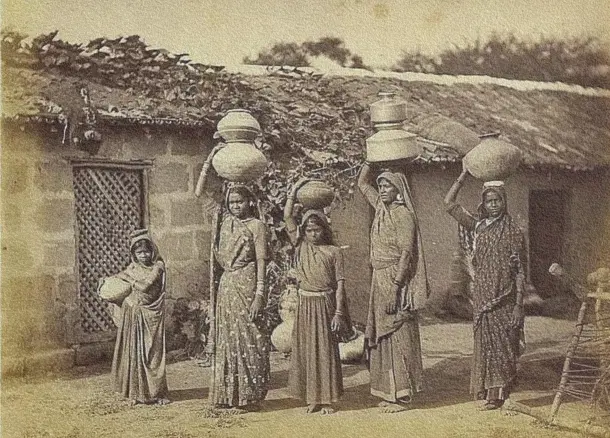
In addition, an honest retelling of tribal resistance must also not make the mistake of looking at tribal leaders as just military commanders. They were often visionaries, shamans or prophets, believed to have direct communication with the divine. They did not issue manifestos; they performed rituals, sang songs and recited visions. A prophecy could mobilise a community faster than any political pamphlet.
Songs and stories travelled quickly, crossing hills and rivers. A rebellion might start with a single village refusing to pay tax, but as the story was told, embellished with divine signs and omens, it could spark a wave of uprisings. The British never fully understood this oral network, but they feared it. Arresting one leader often did not end the movement; another would rise, sometimes claiming the same visions, sometimes building upon them.
These struggles must stand alongside the salt march and the secret bomb factory. Birsa Munda, Komaram Bheem, Rani Gaidinliu — these are not footnotes but chapters shaped by landscape, cosmology, and forms of resistance unlike anything in the cities.
This third stream of the freedom struggle, the tribal stream, is perhaps the most grassroots of them all. It was not planned in committees; it was not negotiated in roundtables.
The Tribal Heartland's Fury
The central Indian plateau and forests reverberated with the sound of tribal war cries, of peasants lifting bows and swords, of entire communities rising not just in protest, but in war against the British Raj and its local collaborators. Here, in the jungles, uplands, and valleys stretching from Odisha to Jharkhand, Chhattisgarh, Madhya Pradesh and even Rajasthan, the fight was raw, desperate and intensely local, yet it drew from the same wellspring of resistance that animated all of India.
Long before 1857, long before the Congress or the great names of the nationalist movement, the first spark of armed resistance against British rule came from the forests of Bhagalpur. In 1771, Tilka Manjhi, a Santhal leader, rose against the East India Company’s tyranny, which had brought famine, dispossession, and humiliation to his people.
From the hills, Tilka launched a guerrilla campaign, striking swiftly and disappearing into the jungles. In 1784, when the Company’s harsh administrator Augustus Cleveland imposed crushing controls on the forests, Tilka confronted him in the only language the British seemed to understand — force. He fired a poisoned arrow that fatally wounded Cleveland, marking the first recorded killing of a British official in open rebellion.
Tilka’s fight was not for abstract political rights, but for the survival of his people’s way of life. He is remembered for words that summed up the heart of the tribal resistance:
“Our people have lived here since the dawn of creation. We have never been the lords of the earth. The earth is our mother. We are all her children. We are the trustees of this land. It is our responsibility to see that the land continues to sustain future generations that we have not even imagined. This is our heritage. Then how can you, British, an alien race, declare yourselves the lords and masters of the forests that sustain us and give us life? How can you deny us entrance to the only home we have ever known? We will die before we accept this rule.”
Hunted down after months of resistance, Tilka was captured, tied to four horses, and dragged to Bhagalpur, where he was hanged in public. But his words and defiance would echo in every tribal uprising that followed.
Then in 1817, the coastal and hilly tracts of Odisha were aflame. The Paikas, an ancient warrior class who served as militia for the Gajapati kings, found their world overturned when the British wrested Odisha from the Marathas in 1803.
The Paikas had been proud landholders, granted nishkar lands for their service, with some belonging to the Khond tribe. The East India Company's new revenue settlement snatched these lands, reducing warriors to debt-ridden peasants. The imposition of salt tax crippled the common folk further.

Under the leadership of Bakshi Jagabandhu Bidyadhar Mohapatra Bhramarbar Rai, the Paikas struck back. In March 1817, they attacked British establishments, torched police stations, looted treasuries, and freed prisoners. Their first blow fell on the police station at Banapur, and soon the revolt spread like wildfire. Bakshi Jagabandhu's men were joined by tribals, peasants, and zamindars who had suffered under British revenue policies. For months, the Paikas controlled large swathes of the countryside, defying British authority.
Though the rebellion was eventually suppressed by year's end, it left an enduring legacy in Odisha. The Paikas had not fought under any pan-Indian banner, yet their cause foreshadowed later uprisings. In the popular memory of Odisha, Bakshi Jagabandhu remains a symbol of martial pride.
In the Chotanagpur plateau, the Kols, an umbrella term for several tribal communities including the Mundas, Oraons and Hos, rose in bloody revolt in 1831. The cause was a deadly mix of British legal interference and the influx of moneylenders and zamindars into their lands. Traditional tribal chiefs, the Mankis and Mundas, were stripped of authority, and the people were reduced to tenants in their own villages.
When the spark came, it was ferocious. Led by local chiefs like Bindrai Manki and Singrai Manki, the Kols attacked police stations, court houses and the homes of dikus (outsiders). The violence was reciprocal and brutal, with hundreds killed on both sides. The British eventually sent in troops from Calcutta, suppressing the uprising by early 1832. But the Kol rebellion forced the colonial government to reconsider direct interference in tribal land systems at least temporarily.
The mid-19th century brought another seismic revolt, this time from the densely forested plateau of present-day Jharkhand. The Santhals, one of India's largest tribal communities, had been lured by the British into settling in the Rajmahal Hills to clear forests for cultivation. In return, they were promised protection from oppressive landlords and moneylenders. But the Company's promises were lies. Soon, zamindars, mahajans and British revenue agents bled the Santhals dry with exorbitant taxes and usurious loans. The forest, once theirs, was parcelled out under colonial land laws.

In June 1855, Sidhu and Kanhu Murmu, along with their brothers Chand and Bhairav, rallied tens of thousands of Santhals. Armed with bows, arrows, axes, and sheer determination, they declared a Hul, a holy war, against the Company. Santhal warriors attacked police stations, postal lines, and rail tracks, cutting off colonial communication. For months, the rebellion shook Bengal Presidency, forcing the British to deploy regular army regiments.
The British, armed with rifles and artillery, slaughtered over 15,000 Santhals. Sidhu and Kanhu were captured and executed. Yet, the Hul left behind a legend of uncompromising defiance. Even today, the Santhal Hul is remembered as a people's war, waged for the right to live free on one's own land.
In the dense forests of Bastar and the Gondwana plateau, the Gonds had ruled semi-independent kingdoms for centuries. British intrusion into these areas in the early 19th century disrupted age-old systems of forest use and tribute. The Gonds resisted in different phases, often under local rajas.
The rebellion of 1818–1820, led by Raghuji Bhonsle's Gond allies in the Chanda (Chandrapur) and Garha-Mandla regions, opposed British political agents meddling in succession disputes. In Bastar, resentment simmered for decades until it erupted spectacularly in 1910, not during the first flush of conquest, but in the mature phase of colonialism.
Known as the Bastar Rebellion of 1910, it was led by the elusive figure Gunda Dhur, who mobilised thousands of Muria and Maria Gonds. The cause was the British decision to reserve forests, banning shifting cultivation, hunting, and grazing. To the Gonds, this was a theft of life itself. Armed with spears and axes, the rebels attacked police stations, burnt colonial outposts, and temporarily drove out officials. The uprising was brutally suppressed, but in Bastar, Gunda Dhur became a folk hero, his name still sung in tribal festivals.
The Bhils of western Madhya Pradesh, northern Maharashtra and southern Rajasthan were no strangers to insurgency. From 1818 to the 1840s, the British faced repeated Bhil uprisings, spurred by the loss of their jagir lands, forced sedentarisation, and restrictions on their movement. Even during the Revolt of 1857, leaders like Bhagoji Naik and Kajar Singh Naik orchestrated guerrilla campaigns, using their intimate knowledge of ravines and forests to harass British troops.
One of the most significant Bhil uprisings occurred between 1818 and 1820 in the Khandesh region. Initially sparked by famine and dispossession, it took on an anti-British character as the Company's forces cracked down on Bhil autonomy. Though British pacification policies (including the controversial "Bhil Corps") eventually quelled the revolts, they never truly broke Bhil pride.
By the late 19th century, the Mundas of Chotanagpur had endured decades of dispossession. British land laws allowed dikus to acquire tribal lands, Christian missionaries made deep inroads, and forced labour (beth begari) was rampant. Into this world stepped Birsa Munda, a charismatic young man who fused elements of tribal tradition and anti-colonial politics into a messianic movement.

Declaring himself the messenger of God, Birsa preached the end of diku rule and the restoration of the Khuntkatti system, the traditional Munda collective land ownership. In 1899, his call for Ulgulan (Great Tumult) brought thousands of Mundas into open revolt. They attacked police stations, burnt mission property, and clashed with troops.
The British responded with overwhelming force. Birsa was captured in early 1900 and died mysteriously in jail at the age of 25. His movement failed militarily, but it transformed Munda identity. Today, Birsa is revered not just as a tribal leader, but as a pan-Indian freedom fighter, his name gracing universities, parks and even India's Parliament annals.
From the same Munda heartland arose another movement which was very different in method, but no less revolutionary in spirit. The Tana Bhagat movement, founded by Jatra Bhagat in 1914, began as a religious reform movement among the Oraon tribe. Rejecting animal sacrifice, liquor, and certain rituals, the Tana Bhagats sought moral purification. But under colonial oppression, the movement took on a political edge.
When Mahatma Gandhi's Non-Cooperation Movement reached Chotanagpur, the Tana Bhagats adopted his methods even before his direct involvement. They refused to pay taxes, boycotted British goods and picketed liquor shops, but always maintained nonviolence. British authorities saw them as dangerous precisely because they were disciplined and unyielding.
By the 1920s, the Tana Bhagats had become some of Gandhi's staunchest tribal allies. While their armed predecessors had sought freedom through the bow and arrow, the Tana Bhagats carried the tricolour, showing that the tribal resistance in central India had evolved, but never surrendered.
The Hills Resist
If the plains and plateaus of India birthed great, revolutionary leaders, the hill country waged a slower, stubborn war of attrition. From the first decades of the 19th century to the twilight years of the Raj, the British found that the hills of the Northeast could be entered but never truly conquered.
In 1829, the British proposed to the Syiem (chief) of Nongkhlaw, U Tirot Sing, that a road be built through Khasi territory linking the Brahmaputra Valley with Sylhet. They framed it as an opportunity for trade and communication. But Tirot Sing, a leader deeply attuned to the shifting politics of the region, quickly saw the hidden hand: roads were the thin end of the wedge, the precursors to troops, tax collectors and the dismantling of sovereignty.
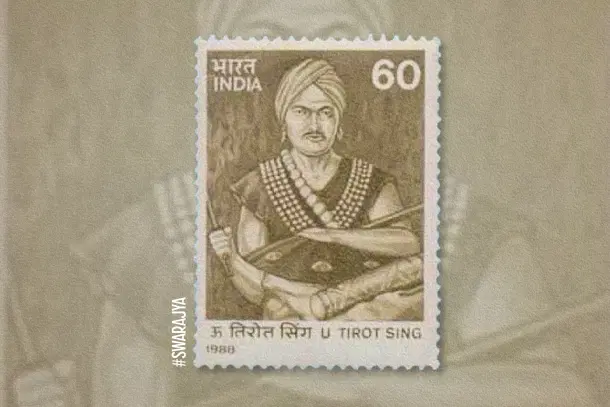
When talks broke down, Tirot Sing ordered the British to leave Khasi land. They refused. The first blow was struck at Nongkhlaw, where Khasi warriors armed with swords, spears and matchlocks fell upon a British detachment. The Khasi campaign was not a single battle but years of guerrilla strikes, ambushes in mountain passes, sudden night raids, the enemy vanishing into forest and mist.
But the technological gap was stark. By 1833, British forces, better armed and supplied, captured Tirot Sing. He was tried and executed in Dhaka, yet his four years of resistance became the seed of Khasi political memory.
Three decades later, the neighbouring Jaintia Hills erupted under U Kiang Nongbah. The British had annexed the Jaintia kingdom in 1835, abolishing the monarchy and imposing taxes alien to the hill economy. Worse, they began to interfere in the indigenous faith and social institutions, undermining the authority of traditional chieftains.
In 1862, Kiang Nongbah led a revolt that blended political defiance with cultural protection. His fighters, moving from village to village, struck at British outposts and tax stations. Though the campaign was short-lived, ending with his capture in early 1863, Kiang Nongbah's gallows speech became legendary:
"If my face turns to the east as I hang, it will mean the white man will leave our land; if west, they will rule for generations."
It turned east and the prophecy sharpened the people's resolve.
In the Garo Hills, the British faced resistance from fiercely independent clans who had never known centralised rule. Among them rose Pa Togan Nengminza Sangma, a warrior who, in 1872, confronted the British as they advanced deeper into Garo territory.
Armed with poisoned bamboo spikes and shields, Pa Togan's force engaged in a last stand at Chisobibra. Outnumbered and facing rifles, the Garos fought with desperate bravery until Pa Togan fell. His death cemented him as a folk hero, the embodiment of a culture's refusal to be subdued.
Later, in the early 20th century, another Garo figure, Sonaram R. Sangma would take the struggle into the political realm, becoming an organiser and advocate for Garo rights, linking their concerns to the broader nationalist movement. When British soldiers threatened to kill him, he replied, "You can shoot me with a gun and kill me and throw my dead body in the Manda river, but wherever my dead body reaches you must sign an agreement that till that place should be the Garo land".
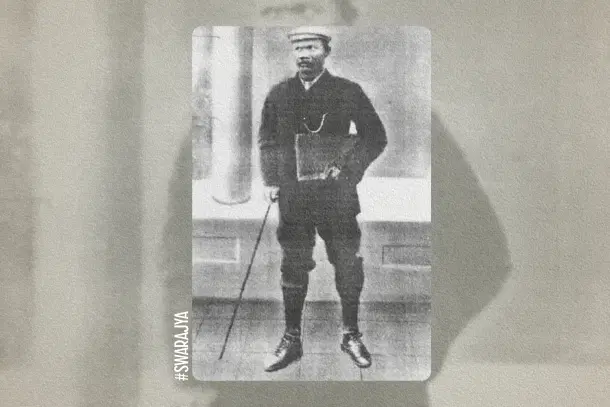
In Manipur, the Raj's high-handed diplomacy collided with a proud royal house. The British sought to dictate succession and policy; the Manipuris resisted. In 1891, this came to a head in the Anglo-Manipur War.
The Manipur valley, unlike the remote hills, had a long tradition of organised monarchy. Bir Tikendrajit Singh, born in 1856 as the fourth son of Maharaja Chandrakriti Singh, was both a prince and a soldier. Known as the "Lion of Manipur," his rise to power coincided with mounting tensions between the royal house and the British Resident.
When palace intrigues erupted in 1890, Tikendrajit played a decisive role in overthrowing his brother Surchandra Singh and installing Kullachandra on the throne. The British, unwilling to tolerate a Manipuri court that refused to be pliant, sent Chief Commissioner J.W. Quinton with orders to arrest Tikendrajit. The attempt backfired spectacularly. During Raslila celebrations in March 1891, British troops attacked his residence, killing civilians. Enraged Manipuris retaliated, killing five British officers; an act that ensured all-out war.
The Anglo-Manipur War saw British forces advance from Kohima, Silchar and Tamu. Despite fierce defence, Kangla Palace fell on April 27, 1891. Tikendrajit was captured, tried and hanged in public on August 13, 1891, alongside Thangal General. Imphal's Polo Ground still bears his name: Bir Tikendrajit Park, where Manipur marks "Patriot's Day" every year.

In the same war, another name burnt itself into Manipuri memory: Major General Paona Barjabashi. Leading 700 soldiers at Thoubal, Paona fought what many historians call one of the fiercest last stands in Indian history. Offered a high post if he defected, Paona rejected the bribe: death before dishonour. He fell on April 23, 1891, a martyr whose sacrifice is still honoured.
As the 20th century progressed, the Northeast saw not only armed resistance but also spiritual and cultural revivalism woven into the anti-colonial cause. Among the Zeliangrong Nagas, Haipou Jadonang emerged in the 1920s as a prophet and political leader. He preached the restoration of Naga sovereignty, the protection of indigenous religion from Christian missionary pressure, and the rejection of British-imposed taxes.
Jadonang's followers built "Heraka" temples, blending religious reform with political mobilisation. The British saw him as a dangerous agitator and arrested him on charges of murder. His execution in 1931 was intended to crush the movement, but instead passed the torch to his young disciple, Rani Gaidinliu.
Barely 16 when she assumed leadership, Rani Gaidinliu became a living legend. She led her people in evading British patrols, conducting raids and urging a return to the Heraka faith. For her, the struggle was both political (ending British rule) and civilisational (preserving the Naga way of life).
The British branded her the "Rani of the Nagas" in a tone half-admiring, half-condescending. But their admiration did not temper their pursuit. She was captured in 1932 and sentenced to life imprisonment, spending years in various jails before her release in 1947.
Independent India would honour her with the Padma Bhushan and the title "Freedom Fighter," but for her people, she was more than a fighter, she was a guardian of identity in an age of encroachment. Years later, she would work with the Rashtriya Swayamsevak Sangh (RSS) to restore the Naga indigenous faith.
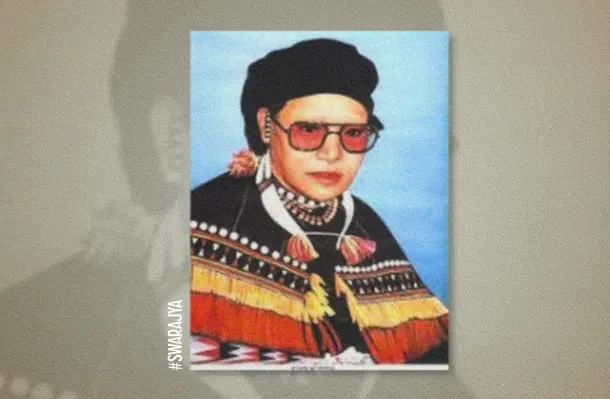
From Tirot Sing's first defiance in 1829 to Rani Gaidinliu's arrest in 1932, the hills had been in near-constant revolt for over a century. These movements were rarely linked by common leadership or strategy. Each arose from a local grievance but together they formed an unbroken chain of indigenous defiance.
South India's Tribal Freedom Struggles
While tribal uprisings in central and eastern India have received some attention, the south's forested hills also witnessed fierce resistance. Among the leaders, Alluri Sitarama Raju and Komaram Bheem stand out as enduring icons, but not the only ones.
These movements emerged from the communities, combining guerrilla warfare, deep knowledge of terrain, and demands for autonomy.
The Koya tribes of the Godavari Agency region had resisted British intrusion long before Raju. In the late 19th century, the Koya uprisings of 1879–80 were led by Tammandora and Raja Ananta Raju, targeting police outposts and British tax collectors. These early struggles set the stage for the later Rampa Rebellion.
In present-day Kerala, the Kurichiya tribals, skilled in archery, revolted against British taxation policies and forest restrictions. Allied with the Pazhassi Raja in earlier conflicts, they fought fiercely in Wayanad but were eventually subdued.
The Konda Dora tribes of the northern Andhra and Odisha border areas staged repeated revolts in the 19th century, especially against British forest regulations that cut off access to shifting cultivation and hunting.
Before Komaram Bheem's leadership, Adilabad's Gonds and Kolams staged smaller uprisings against landlords and the Nizam's forest laws, often suppressed brutally but keeping the spirit of resistance alive.
The Rampa Rebellion was one of the most formidable uprisings in the Eastern Ghats, led by the legendary Alluri Sitarama Raju, revered as "Manyam Veerudu" (Hero of the Jungle). Born in 1897 in present-day Andhra Pradesh, Raju left formal education early, travelled widely across the country, and came into contact with freedom fighters influenced by Gandhian ideas.
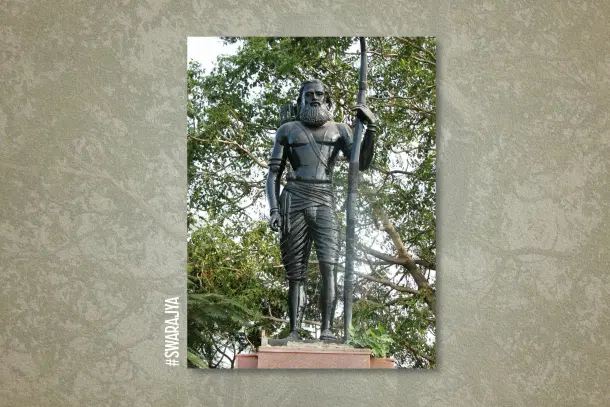
However, the plight of the tribal Koyas and other hill communities under British forest laws turned him towards armed resistance. The colonial government's restrictions on podu (shifting) cultivation, hunting, and free movement in forests crippled the tribal economy and destroyed their way of life. The Koya tribals were also exploited by moneylenders and local contractors.
Between 1922 and 1924, Raju led the Koya tribes in a series of guerrilla attacks on police stations, looting weapons and distributing them among the people. His deep knowledge of the forests allowed him to evade capture repeatedly. The rebellion spread across the Agency areas of the Godavari district, embarrassing the British, who poured in troops to suppress it.
In May 1924, he was eventually betrayed, captured and executed without trial by the British. His death only cemented his place as a folk hero and to this day, ballads of his courage echo in Andhra's hill country.
In the Adilabad forests of present-day Telangana, Komaram Bheem emerged as a champion of the Gond tribes. Born in 1901 in the village of Sankepalli, Bheem grew up witnessing the exploitation of the Gonds under the feudal Asaf Jahi Nizam of Hyderabad. The forest lands, traditionally belonging to the tribes, were being seized, and tribal communities were forced into bonded labour by local landlords (zamindars).
Bheem's slogan, "Jal, Jangal, Zameen" (Water, Forest, Land), became the rallying cry for tribal self-rule. His fight was not merely anti-feudal but also anti-colonial in spirit, resisting both the Nizam's administration and the indirect control of the British.
Between the late 1920s and 1940, Bheem organised the Gonds into an armed force, teaching them guerrilla tactics and uniting disparate tribal hamlets. His rebellion culminated in an armed confrontation in 1940 at Jodeghat, where he and his followers were surrounded by the Nizam's police. Refusing to surrender, Bheem was shot dead, becoming a martyr at the age of 39. Today, his memory inspires not only Telangana's tribals but also wider movements for indigenous rights in India.

The tribal uprisings of South India, whether in the hills of Wayanad, the forests of Adilabad, or the Eastern Ghats, shared common themes: defence of land and forests, rejection of external authority and the unyielding spirit of freedom. Leaders like Alluri Sitarama Raju and Komaram Bheem are now woven into the popular memory of the south as symbols of courage and defiance.
Why They Are Marginal in National History and What We Can Do
Colonial officers dismissed them as "tribal disturbances," not worthy of the same historical weight as battles between princes or declarations by Congress leaders. For British administrators, these uprisings were little more than administrative inconveniences, to be quelled and filed away in dusty reports. Later historians, often urban, English-educated and steeped in the metropolitan view of history, either ignored them entirely or compressed them into footnotes under vague labels like "local resistance."
Oral traditions such as songs and ballads kept the memory alive in the villages and hills but the absence of written chronicles meant the mainstream history syllabus could pass them by without guilt. In post-independence India, where official politics preferred neat, linear narratives of unity and non-violence, there was little appetite for stories of defiance that didn't neatly align with Gandhi, Nehru or the Congress-led nationalist arc.
In recent decades, there has been a partial revival. Environmental movements have borrowed the language of Jal, Jangal, Zameen. Statues of Birsa Munda, Komaram Bheem, and Rani Gaidinliu rise in city squares. Schoolchildren in some states now know their names. Yet, these gestures risk being symbolic if not matched by deeper recognition. The true legacy of these movements lies not in the bronze and granite, but in the ongoing fight of tribal communities to preserve their land, languages and ways of life. In their eyes, the struggle never truly ended in 1947; it simply changed its form, from muskets and bows to court petitions and protest marches.
If we are to correct this imbalance in national memory, we need more than commemorative days. We need tribal history written into the mainstream syllabus, not as appendices but as core chapters. We need research that works with oral sources, not dismisses them. And we need policy that recognises that defending the dignity of India's tribal peoples is not charity, it is the unfinished work of our freedom struggle.
The Forgotten Heroes
The Indian freedom struggle is incomplete without the third stream of these tribal uprisings — full-blooded wars for sovereignty fought with the same conviction as any battle in Calcutta or Bombay. Their leaders measured freedom not in constitutions but in whether their children could walk forest paths and worship their ancestral gods. Only by including these voices can we see the freedom struggle as a complete tapestry.

